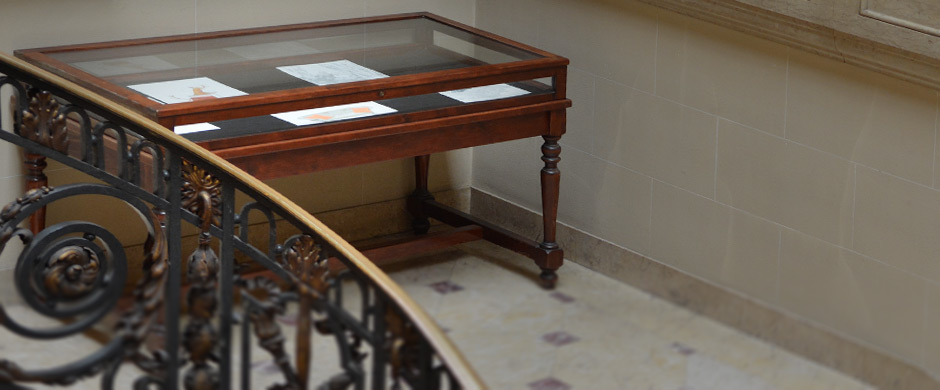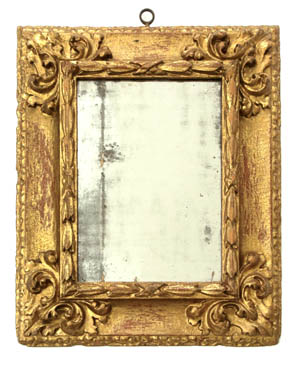 | On Display
| On Display

Display Cases in the Great Hall: Exhibition Archive
Completing the Image: Baroque Frames
24 January – 21 February, 2020
 Frames complete pictures, holding them for display on a wall or other setting, and presenting them to face the viewer. They follow the form of stretched canvas, protecting the work, and defining physical structure and visual borderlines to separate and support that picture from the outside reality of the viewer. The frames shown here reveal some of the rich abundance of patterns, forms and designs created to present European paintings from the baroque period, with one example of a later French papier maché frame embellished to reflect and capture the light with japanning and glimmering Mother-of-Pearl. Baroque elements of curvature, theatricality, and movement are present in the frames from the late 16th through the 19th c., and also in the containment of severe and linear 17th c. architectural moldings, meant to be a simple division between the viewer’s reality and a contained image. Frames create visual and physical borders to their contents, to shape or to display. Empty frames lose their context and sometimes their meaning. Yet they remain as constructed armatures, and these vestiges of what had been created and displayed, are too often repurposed to serve anew.
Frames complete pictures, holding them for display on a wall or other setting, and presenting them to face the viewer. They follow the form of stretched canvas, protecting the work, and defining physical structure and visual borderlines to separate and support that picture from the outside reality of the viewer. The frames shown here reveal some of the rich abundance of patterns, forms and designs created to present European paintings from the baroque period, with one example of a later French papier maché frame embellished to reflect and capture the light with japanning and glimmering Mother-of-Pearl. Baroque elements of curvature, theatricality, and movement are present in the frames from the late 16th through the 19th c., and also in the containment of severe and linear 17th c. architectural moldings, meant to be a simple division between the viewer’s reality and a contained image. Frames create visual and physical borders to their contents, to shape or to display. Empty frames lose their context and sometimes their meaning. Yet they remain as constructed armatures, and these vestiges of what had been created and displayed, are too often repurposed to serve anew.
Drawings of frames demonstrate one aspect of how asymmetrical designs emerged. The 18th c. French cartouche study here with figural and shell decoration, likely served as a presentation drawing, suggesting options of a commission before the project of carving and gilding the frame was begun. Frames were so highly valued in Europe that they were often listed individually in estate inventories prepared for appraisals, with descriptions, measurements, and values that at times surpassed the cost of the painting.
Frames have often been used as metaphysical devices in European paintings. Velázquez is perhaps the most universally recognized as a transcendent interpreter of framing devices, realized in his masterpiece, Las Meninas (Prado, Madrid). Murillo’s portraits and self-portraits, too, use frames interstices between realities, where an oval frame served more as a window on which the artist rested his hand (National Gallery, London). Rembrandt used the framing device poetically in The Holy Family with Curtain (Staatliche Kunstmuseum, Kassel), and Georges de la Tour used a framed mirror to reflect a candle and flame to add meditative depth in his Penitent Magdalene (Metropolitan Museum, New York). François Boucher’s La Toilette (Museo Thyssen-Bornemisza, Madrid) includes a carved gilt frame to bridge the real and the imagined.
Curated by Lisa A. Banner
Contact the Institute
Building Hours
Contact Information
If you wish to receive information on our upcoming events, please subscribe to our mailing list.



